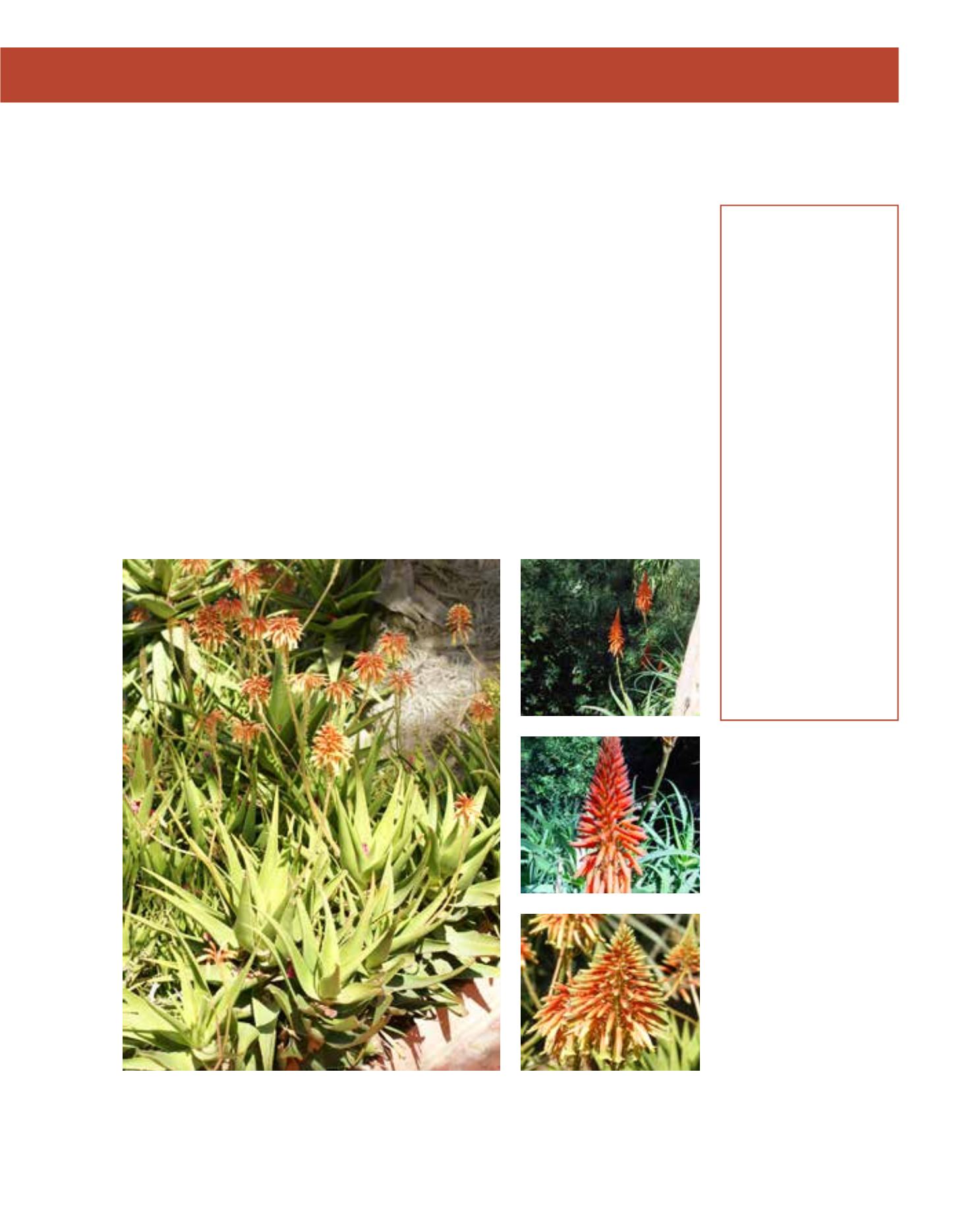

GENERAL
Origin
:
Mediterranean,
sub-tropical
Vigour
:
slow-growing
Humidity
:
very arid, semi-
arid
Propagation :
sowing and
pricking out,
cuttings, division
Maintenance :
low
CONDITIONS
Urban climate :
resistant
Dessication :
resistant
Stagnant water :
vulnerable
Irrigation
:
low
Salinity/ppm :
high (5000 ppm)
Hardiness
:
-3°C
SHAPE
Type
:
cacti, succulents
Height
:
1 m-3 m
Spread
:
1.5 m-4 m
Foliage
:
evergreen
FLOWER
Colour
:
red, dark orange
Size
:
60 cm - 80 cm
Period
:
April - May
FRUIT
Type of fruit :
capsule
Fruit size
:
0.8 cm
Tubular scarlet flowers make this Giant Aloe, sabbar alo in Arabic, a striking eye-catcher in early
spring. Inflorescences sprout straight up from the centre and top the plant. It eventually develops
a tree-like appearance in time. Native to South Africa, it thrives well in heat and reaches 2 metres
in height with an additional 60 cm in flower. Very occasionally, it may grow into a 4-metre-high
tree when mature. Aloes are very tolerant of soil pH, tolerating alkalinity, but they require good
drainage, often growing on rocky slopes in the wild. Too much water damages the root system.
Giant Aloes will tolerate full sun, but may develop brown leaf tips if sun exposure goes hand
in hand with prolonged drought. Dead leaves are retained for many years, unless removed by
the gardener. Dead floral stems should also be cut off, to achieve a neat appearance. Although
they survive with little water, the foliage may become dull green in extreme drought. They soon
recover from discolouration when watered. Frost immediately causes damage, beginning with
flabby leaf tips up to total loss in just one night. Its pointed, light-green leaves are succulent and
spines are aligned along the margins. This armour should be reason enough not to place it next
to pedestrian areas. Giant Aloes make accent plants in rock gardens and are easy to combine with
other succulents. Being used to little amounts of soil, they make very good container plants. They
are usually reproduced by offsets or seeds.
48
Aloe arborescens,
Aloaceae
Giant Aloe,
Candelabra Aloe, Tree Aloe, sabbar alo
















